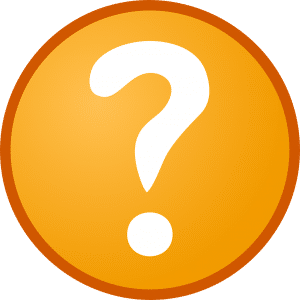What Is Not Included In a Home Inspection?

#1 Hidden Issues: Some details are impossible to detect.
Your inspector is still human; He or she does not have psychic powers or x-ray vision. If the seller conceals evidence well enough or the issue is latent, some problems will slip by. If concerning details are not present, an inspector can’t report it.
It’s also important to note that an inspector is not required to move furniture or other obstacles to reach outlets, appliances, or systems. If their path is blocked or unsafe, they will not inspect it. If areas are not accessible, your report will note that the inspector could not properly inspect it or he/she will reschedule the entire home inspection.
#2 Appearance: Looks aren’t everything!
Cosmetic or aesthetic defects are not reported. If the paint job is awful, the home buyer can plainly see it. The home inspector is only worried about ugly details that spell trouble, like bubbling or peeling paint — a sign of moisture buildup.
Bad decorations are also not a cause for alarm. Even if decorative items are atrocious, an inspector will not include it in their report.
#3 Finances: Is the price right?
Estimating the cost of repairs, replacements, or the market value of a home is not a part of your home inspector’s job description. Neither is evaluating the life expectancy of the components on your property.
Some home inspectors will guess based on the evidence they find and their knowledge of how long most components of a home last. But it shouldn’t be treated as an absolute truth.
#4 Home Insurance: Wrong inspection!
Your home inspection report will not determine the insurability of your property. In order to receive home insurance, you must receive a 4 point inspection from an inspector hired by your insurance provider. A wind mitigation inspection helps you to lower your premium with discounts based on how well your home adheres to present building codes and regulations.
These are our first 4 items. Would you have known about what is not included in a home inspection? Find out more in our second half of the list. This leads us to #5.
#5 Building Codes and Regulations
If you are a home seller, you may be relieved to know that a home inspection won’t expose your secret DIY projects. But for a buyer, that might not be welcome news. If this is something that is important for you to know before closing the deal, contact Divinity Inspection Service. We offer an enormous variety of inspections and will happily accommodate you and your needs.
#6 Non-permanent items: Don’t sweat the small stuff.
Remember, a home inspection is about major components of the property that can cost you big time. That means your home inspection does not include the:
- Refrigerator
- Washer and dryer
- Irrigation system
- Security system
- Water softener
- Alarm system
- Intercom
- Speaker system
- and so on…
These are low-ticket replacements or repairs that could add up if enough of them are broken. It’s wise to check these out yourself or ask the homeowner to demonstrate that they work before you sign anything.
#7 Hazards: Health and safety
A home inspector will report any evidence of the following that they find during the inspection process, but they are not obligated to detect and inform you of their presence. Divinity Inspection Service goes above and beyond their requirements and will look for evidence of mold and pests at no extra charge.
According to Internachi, home inspectors are not required to report:
- Animals including racoons, birds, bats, and rodents
- Insects including termites, cockroaches, carpenter ants, or fleas
- Microorganisms including mildew, mold, or fungus
- Air quality including radon
- Well water quality
- Environmental hazards including hazardous waste, asbestos, or lead paint.
- Electromagnetic fields
They also won’t report if you are near a flood zone or sinkhole.
#8 The 3 S: Sewer, Septic, and Swimming Pools
Item no. 8 of what is not included in a home inspection is the underground portion of a sewer or septic system. This part is only visible through the use of a small camera that is snaked down in hard-to-reach places. This is not a part of the home inspection process. An inspector will flush toilets, check pipes, and look into the septic tank, but there is a lot more under the surface that could stir up trouble such as cracked pipes.
Swimming pools may be commonplace in Florida homes, but they are not part of a standard home inspection. We can provide you with a separate pool inspection in addition to the home inspection.
You want to make informed decisions about your investments, and home inspectors help you do that by carefully looking around and inside of the property in question. If you are interested in having a home inspection performed in Florida within the Tampa Bay area, contact us.




Leave a Reply
Want to join the discussion?Feel free to contribute!